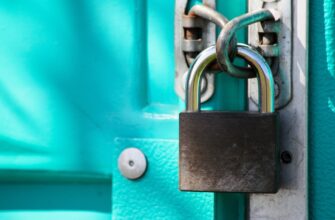When it comes to securing your cryptocurrency assets, encryption is one of the most critical steps you can take. With the rise of cyber threats and hacking incidents, protecting your crypto wallet through strong encryption is no longer optional—it’s a necessity. This guide will walk you through the best ways to encrypt your crypto wallet, tailored for beginners, so you can confidently safeguard your digital assets.
### Why Encrypt Your Crypto Wallet?
Cryptocurrency wallets store your private keys, which are essential for accessing and transferring your digital assets. If these keys are compromised, your funds could be stolen. Encryption adds a layer of security by scrambling your data, making it unreadable to unauthorized users. For beginners, encrypting your wallet is a simple yet powerful way to protect your investments.
### How to Encrypt Your Crypto Wallet: A Step-by-Step Guide
1. **Choose a Secure Wallet**
Start by selecting a reputable crypto wallet. Options include hardware wallets (like Ledger or Trezor) and software wallets (like MetaMask or Trust Wallet). Hardware wallets are generally more secure because they store your private keys offline.
2. **Set a Strong Password**
Create a complex password that includes a mix of uppercase letters, lowercase letters, numbers, and special characters. Avoid using easily guessable passwords like ‘123456’ or ‘password’.
3. **Enable Two-Factor Authentication (2FA)**
Activate 2FA on your wallet to add an extra layer of security. This typically involves a code sent to your phone or email, which you must enter to log in.
4. **Use a Hardware Wallet**
If you’re concerned about security, consider using a hardware wallet. These devices store your private keys offline, making them less vulnerable to hacking.
5. **Back Up Your Recovery Phrase**
When you create a wallet, you’ll be given a 12- or 24-word recovery phrase. Store this securely, ideally in a safe place or with a trusted person. Never share this phrase with anyone.
### Common Encryption Methods for Crypto Wallets
There are several encryption methods used in crypto wallets, each with its own benefits:
– **AES-256 Encryption**: A strong encryption standard widely used for securing data. It’s commonly employed in hardware wallets and software wallets.
– **End-to-End Encryption**: This method ensures that your data is encrypted from the moment it’s created until it’s accessed. It’s ideal for software wallets that require online access.
– **Public-Key Cryptography**: This method uses a pair of keys (public and private) to secure transactions. The public key is shared, while the private key remains secret.
– **Hardware Wallet Encryption**: These wallets use physical security measures to protect your keys, often combining encryption with biometric authentication.
### Tips for Secure Crypto Wallet Encryption
– **Use a Password Manager**: Store your wallet password and recovery phrase in a password manager to avoid forgetting them.
– **Avoid Public Wi-Fi**: Never access your wallet on public Wi-Fi networks, as they are often unsecured.
– **Regularly Update Software**: Keep your wallet software and operating system up to date to protect against vulnerabilities.
– **Enable Cold Storage**: For long-term storage, consider using cold storage (an offline wallet) to keep your funds safe from online threats.
– **Monitor Your Wallet Activity**: Regularly check your wallet for any suspicious transactions. If you notice anything unusual, contact your wallet provider immediately.
### FAQ: Common Questions About Encrypting Crypto Wallets
**Q: What is the best way to encrypt my crypto wallet?**
A: The best method depends on your needs. For maximum security, use a hardware wallet with AES-256 encryption and a strong password. If you prefer a software wallet, ensure it uses end-to-end encryption and 2FA.
**Q: How do I back up my crypto wallet recovery phrase?**
A: Store your recovery phrase in a secure, physical location, such as a safe or with a trusted person. Avoid writing it down in plain text or sharing it online.
**Q: Can I encrypt my crypto wallet if I’m using a mobile app?**
A: Yes, most mobile wallets offer encryption options. Ensure you enable 2FA and use a strong password. Some apps also allow you to set a PIN for additional security.
**Q: What happens if I forget my wallet password?**
A: If you forget your password, you may lose access to your wallet. Always store your password in a secure place, and consider using a password manager. If you lose your recovery phrase, you may not be able to recover your funds.
**Q: Is encryption necessary for all crypto wallets?**
A: Yes, encryption is essential for all crypto wallets. It protects your private keys and ensures your funds remain secure from hackers and unauthorized access.
By following these steps and understanding the best practices for encrypting your crypto wallet, you can significantly reduce the risk of losing your digital assets. Remember, security is a continuous process, and staying informed about the latest threats and solutions is key to protecting your investments. With the right approach, you can confidently navigate the world of cryptocurrency while keeping your funds safe.








